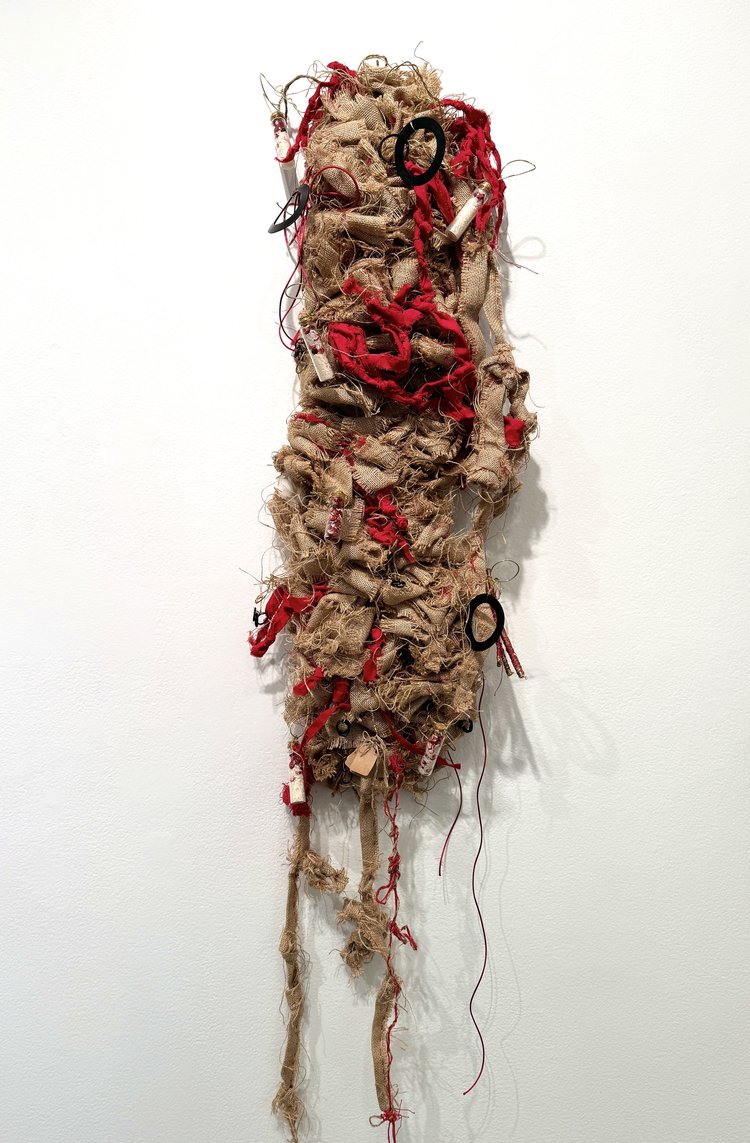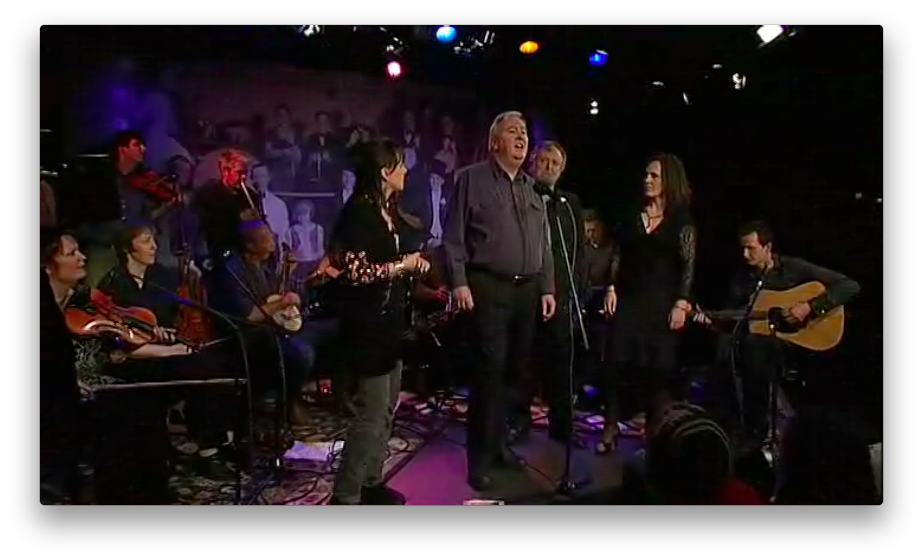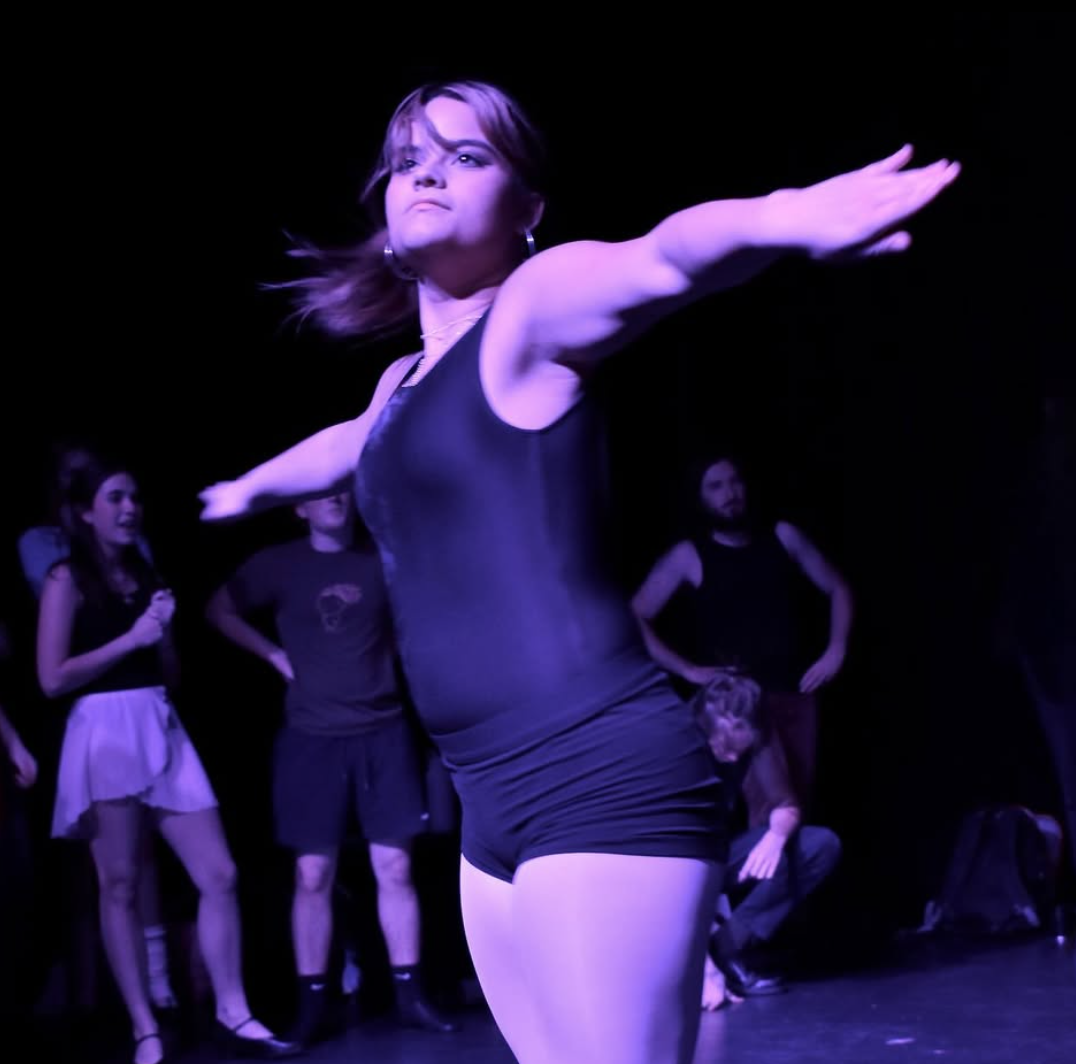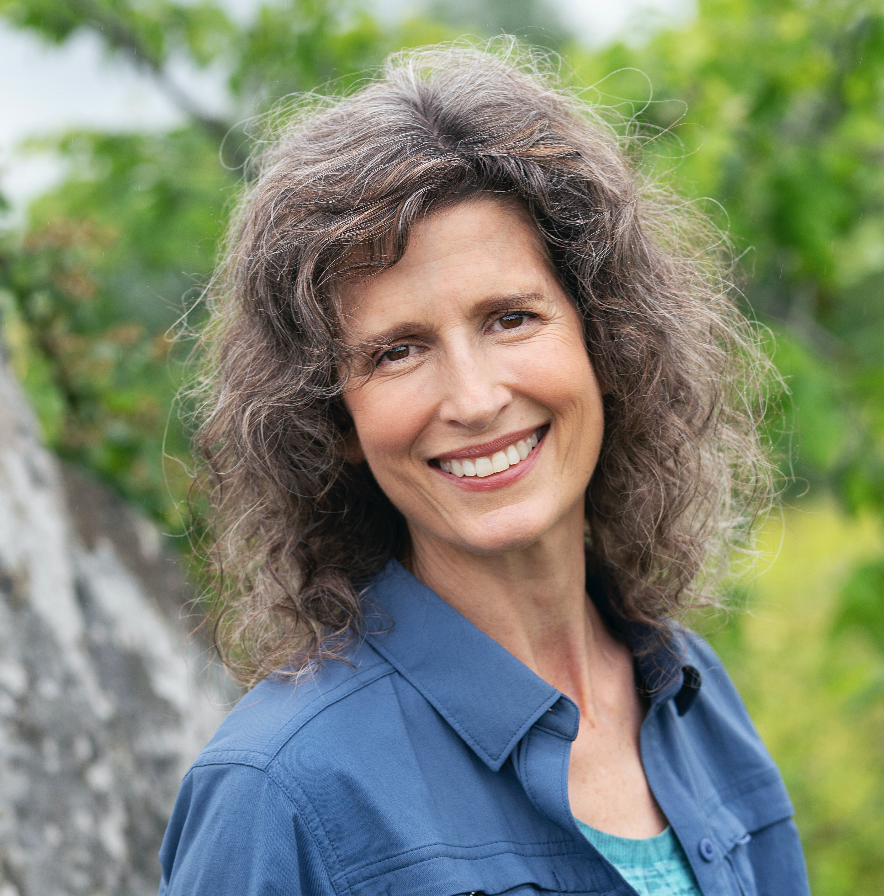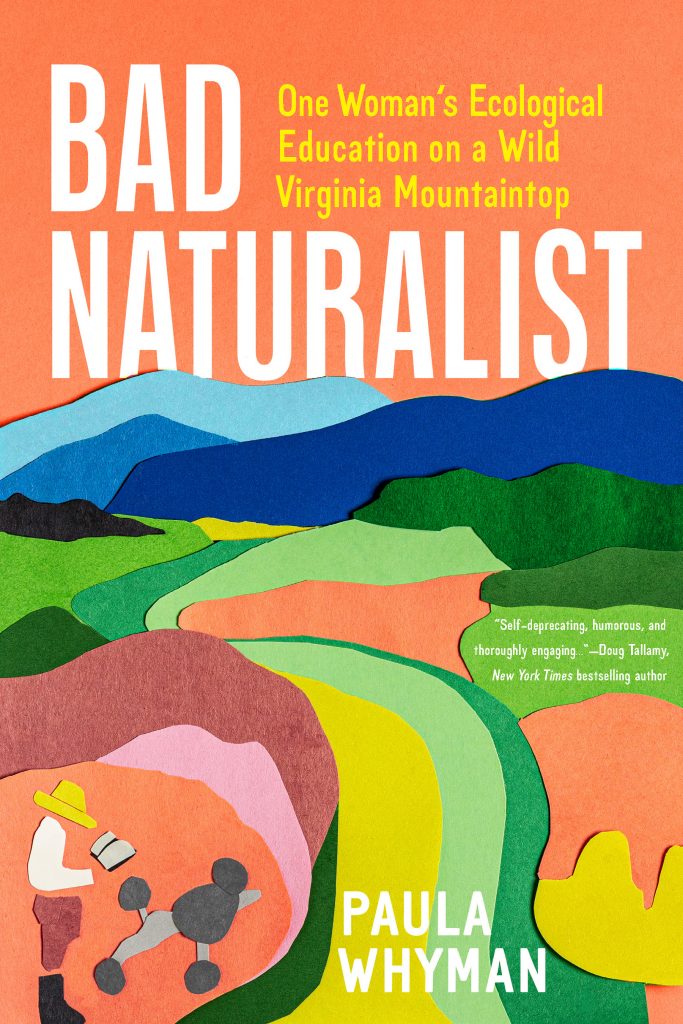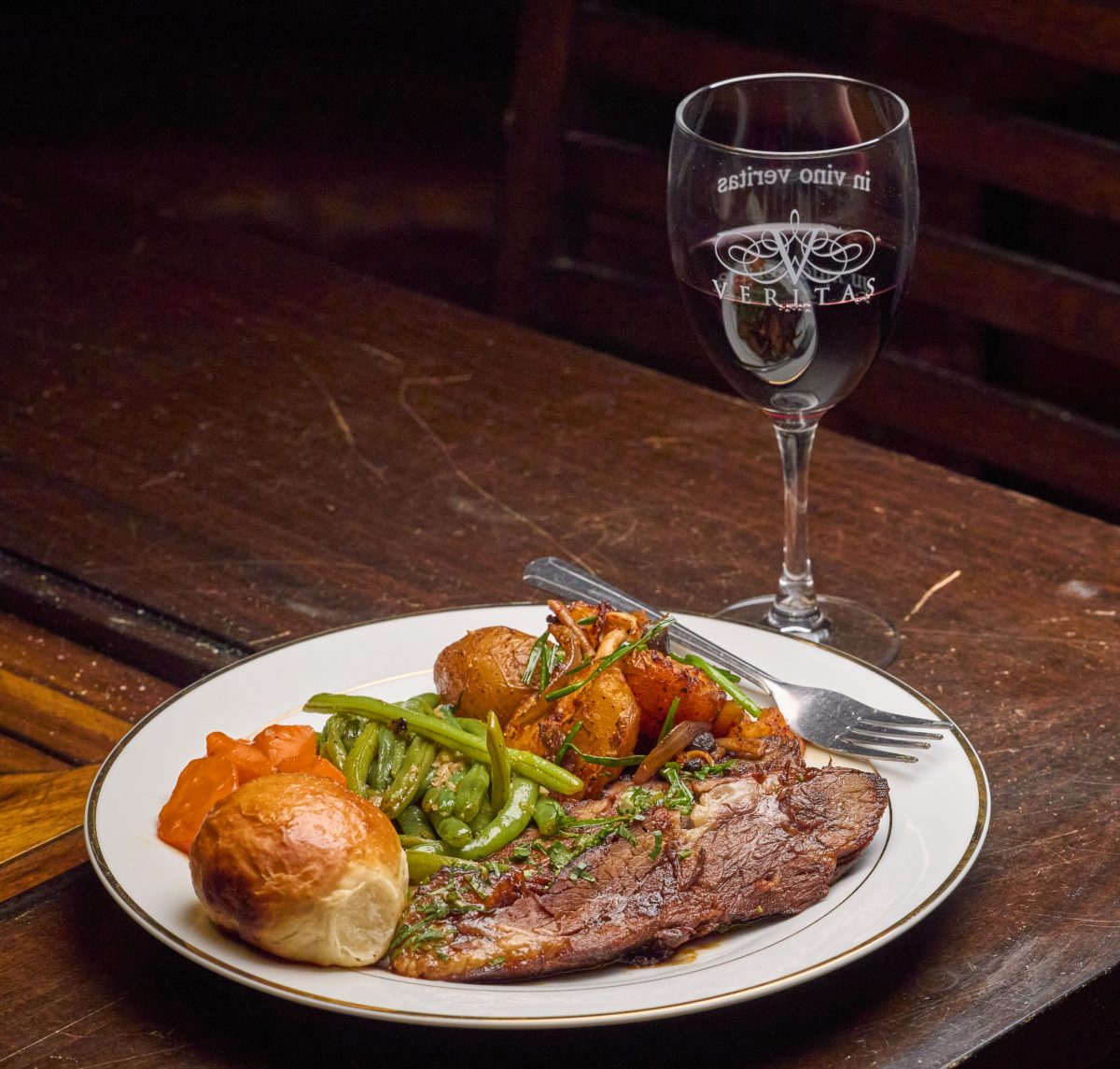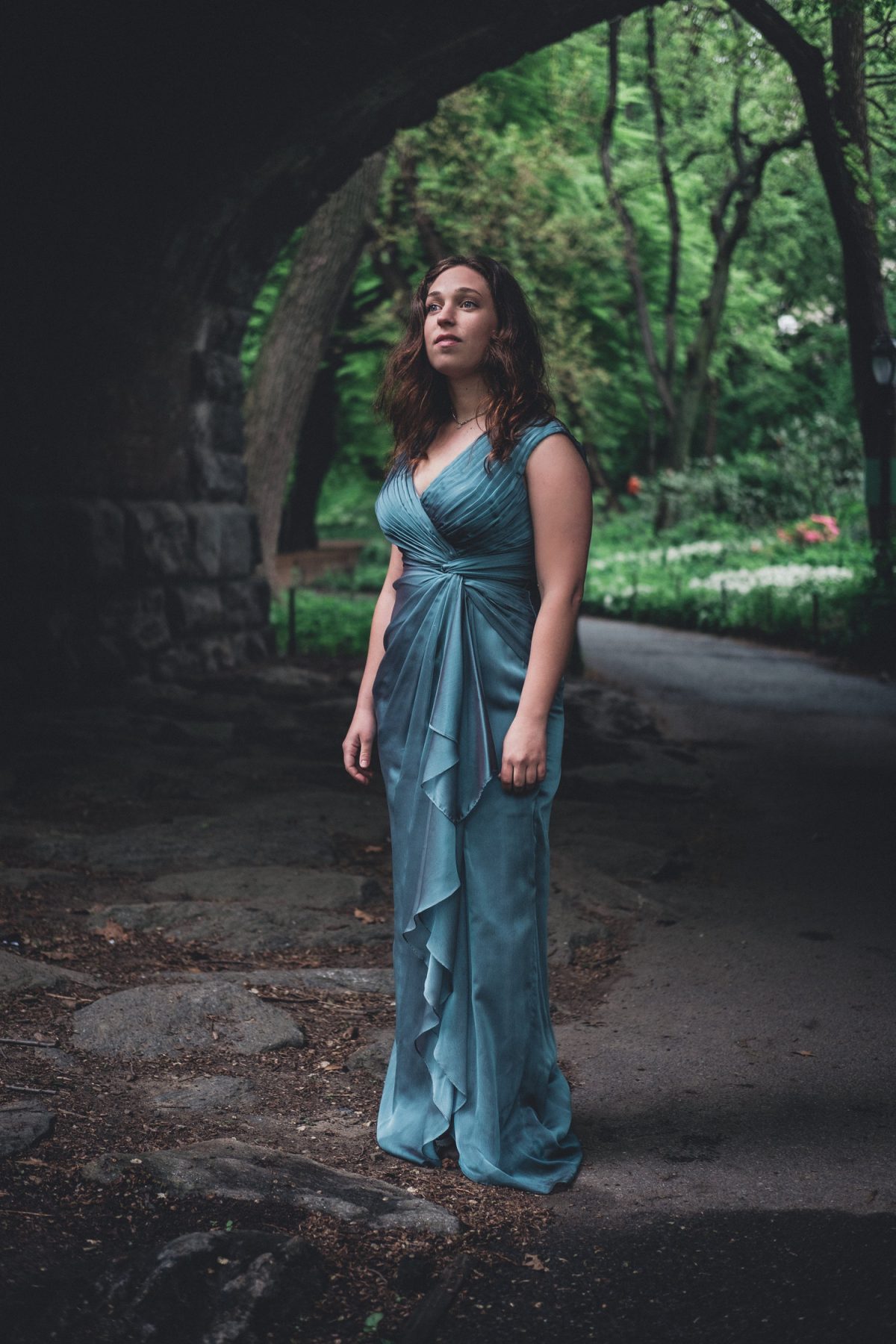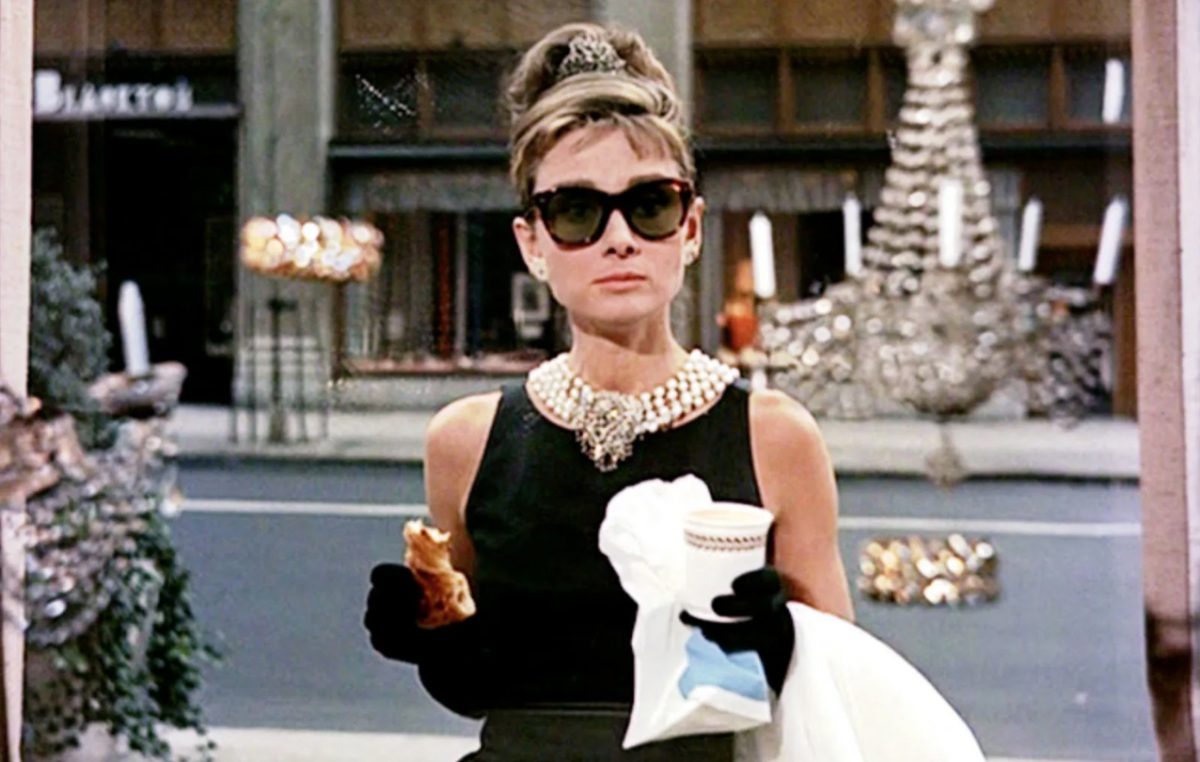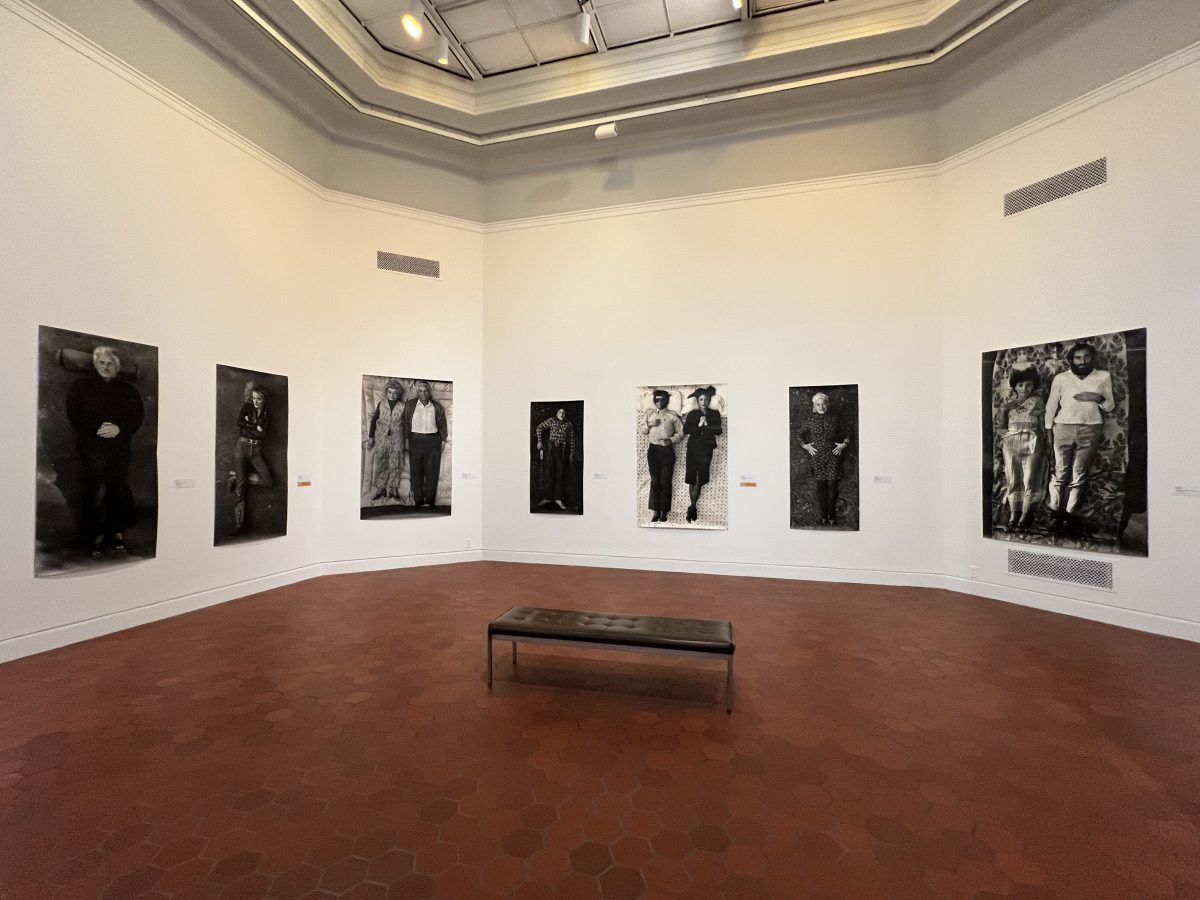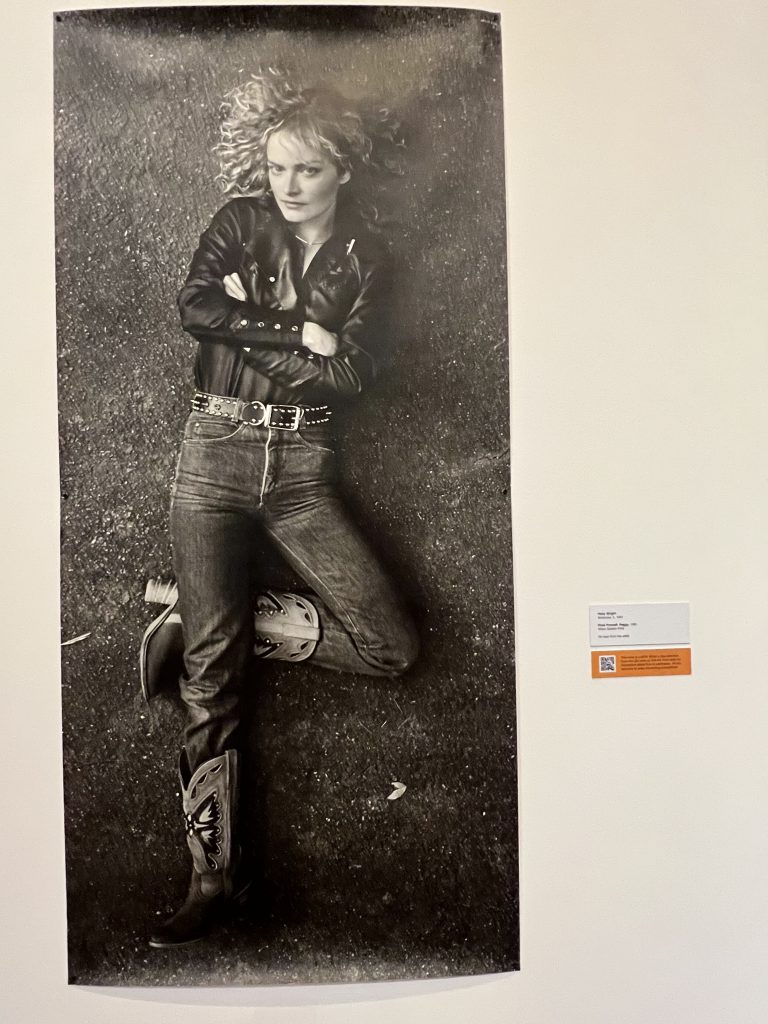“That Feels Good! Labor as Pleasure” at Second Street Gallery brings together 10 artists working in a variety of media and styles whose work shares a labor-intensive, often repetitive, approach. For curator Francisco Donoso, the repetitions and effort yield not just interesting artwork, but also pleasure for the artist creating it.
Donoso cites as inspiration adrienne maree brown’s [sic] philosophy laid out in her book Pleasure Activism: The Politics of Feeling Good. Fiber artists in particular are known for this, and several are represented at Second Street.
John Fifield-Perez’s striking weavings, “Shift/Phase 02,” woven with double weave blocks, and “Pink/Pinch 01,” woven with the lampas technique, present markedly different styles. Resembling traditional weaving, “Shift/Phase 02” is unmistakably contemporary with its almost day-glo colors, bold geometric design, and the numerous yarn ends left dangling. A form of brocade, lampas weaving features two layers that are woven simultaneously. The artist’s interest in the lampas technique derives from its association with Los Angeles artist Diedrick Brackens, whose work explores queer identity. “I first saw modern lampas weave in Brackens’ tapestries,” says Fifield-Perez. “So it holds a connotation of contemporary queer weaving traditions for me.”
Elvira Clayton addresses the legacies of enslavement in her ongoing “Cotton and Rice Project,” which centers on an 1859 Savannah, Georgia, slave auction, one of the largest in history, in which 436 men, women, and children were sold. Her sculptures “Black People” and “Knotted History” feature bits of cloth tangled up with twigs, rice, cotton bolls, sequins, and wire—the fragmentary traces of the enslaved—and convey with their snarls the chaos and heartache endured.
A multimedia piece featuring crochet, a vintage clock radio, and sound, Kathleen Granados’ “Distant (B Sides)” explores familial history, memory, and identity. Granados augments cassette tapes her late father made as a young man with music she chose, cobbling together an intergalactic oldies radio show that resonates outward into space. The clock radio and cabinet reference a domestic setting. Clad in hand-crocheted black yarn, the cabinet both emerges from and recedes back into the surrounding crocheted cosmos. Different stitches arranged in a vortex shape suggests the universe expanding beyond the cabinet. The amorphous shape and the way the bottom part drapes onto the floor underscores this feeling of expansion. Granados dots this inky swathe with a smattering of reflective appliqués to suggest distant stars.
“I like this idea of memory enduring throughout space,” says Granados. “I think of how radio waves, once they’re broadcast, continue to travel through the cosmos. There’s no sound in space, but I like to imagine that if that sound ever reached a distant place that it could be heard. It plays into this idea that these moments we share with our loved ones endure. That’s the impetus behind making the piece talk.”
Joyful and eye-popping, Max Colby’s maximalist creations reference the glittery excess of drag and celebrate nonconformity. Erect, yet soft, the sculptures incorporate both masculine and feminine attributes. “As she engages in this laborious time-consuming process of stitching and making and stuffing, Colby, who is a trans woman, is thinking about the way gender is binaried and the way that nature is perceived and understood and filtered through,” Donoso says.
Nicole Yi Messier and Victoria Manganiello’s art collective, Craftwork, combines traditional craft with state-of-the-art technologies to produce sumptuous textiles that, though machine-made, are based on algorithms derived from plants. So while the weaving is high tech, the patterns are natural and the dyes, which come from organic and inorganic materials including plants, minerals, and fungi, are both synthetic and natural.
There’s no question that Fidencio Fifield-Perez’s woven paper strips rolled over with lithography ink—“Salmon Colored Kid 1” and “Salmon Colored Kid 2”—are made through a painstakingly laborious process. The elegant restraint and stillness created by Fidencio, John Fifield-Perez’s husband, are emblematic of classic minimalism, but here, the weaving also references the handwoven mats of the artist’s native Mexico.
“Vessel Aflame” and “Wild Urn” reveal much about Sarah Boyts Yoder’s oeuvre. Both monotypes, the works compositionally resemble each other thanks to the outline of a vase—one of Yoder’s recurring symbols—that appears in both. These recognizable shapes also disrupt the abstraction, creating an interesting tension between nonobjective and representational.
With its staccato brushstrokes, Richard Yu-Tang Lee’s series “Rain in a Burning Garden” conveys the visual and auditory effects of rain. The allover repetitive nature of the brushstrokes suggests the unrelentingness of a downpour. Glitter adds a rain-slicked quality to the paint, while the title inserts a sense of trepidation.
Laura Josephine Snyder’s nonobjective work appears infused with symbolism. This quality together with its natural pigments, curious forms, and repeated lines recalls Hilma af Klint’s curious paintings and also the cartological quality of Aboriginal artwork. “The diver’s legs (to the sea)” is a mysterious and intense piece, thanks to the two “eyes” that stare out at the viewer.
In the Dové Gallery, Richmond-based Hannah Diomataris shows us another level of labor-intensive repetition with her “Sticker Work.” Using recycled bar codes from stores and libraries, which she cuts into tiny, uniform pieces, Diomataris creates complex arrangements of patterns that awe us with their beauty even as they rattle us with their obsessive attention to detail.
